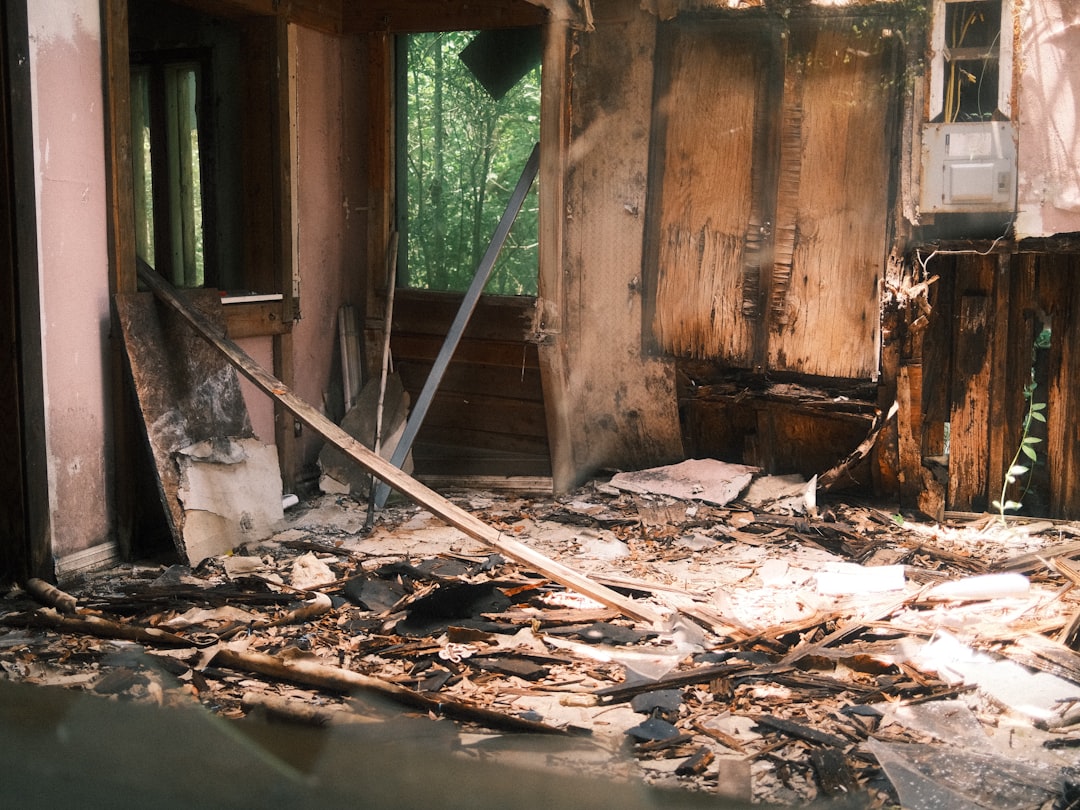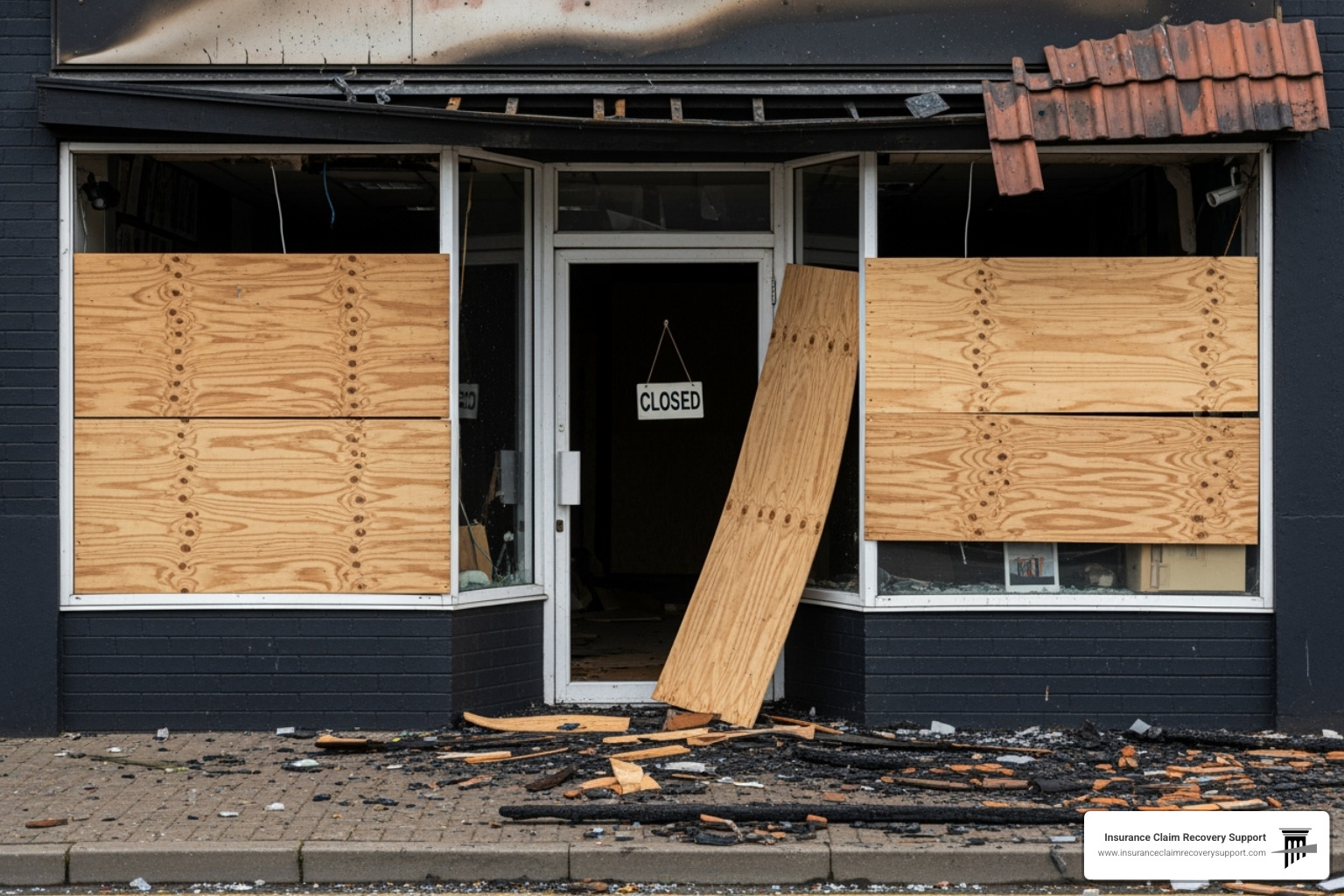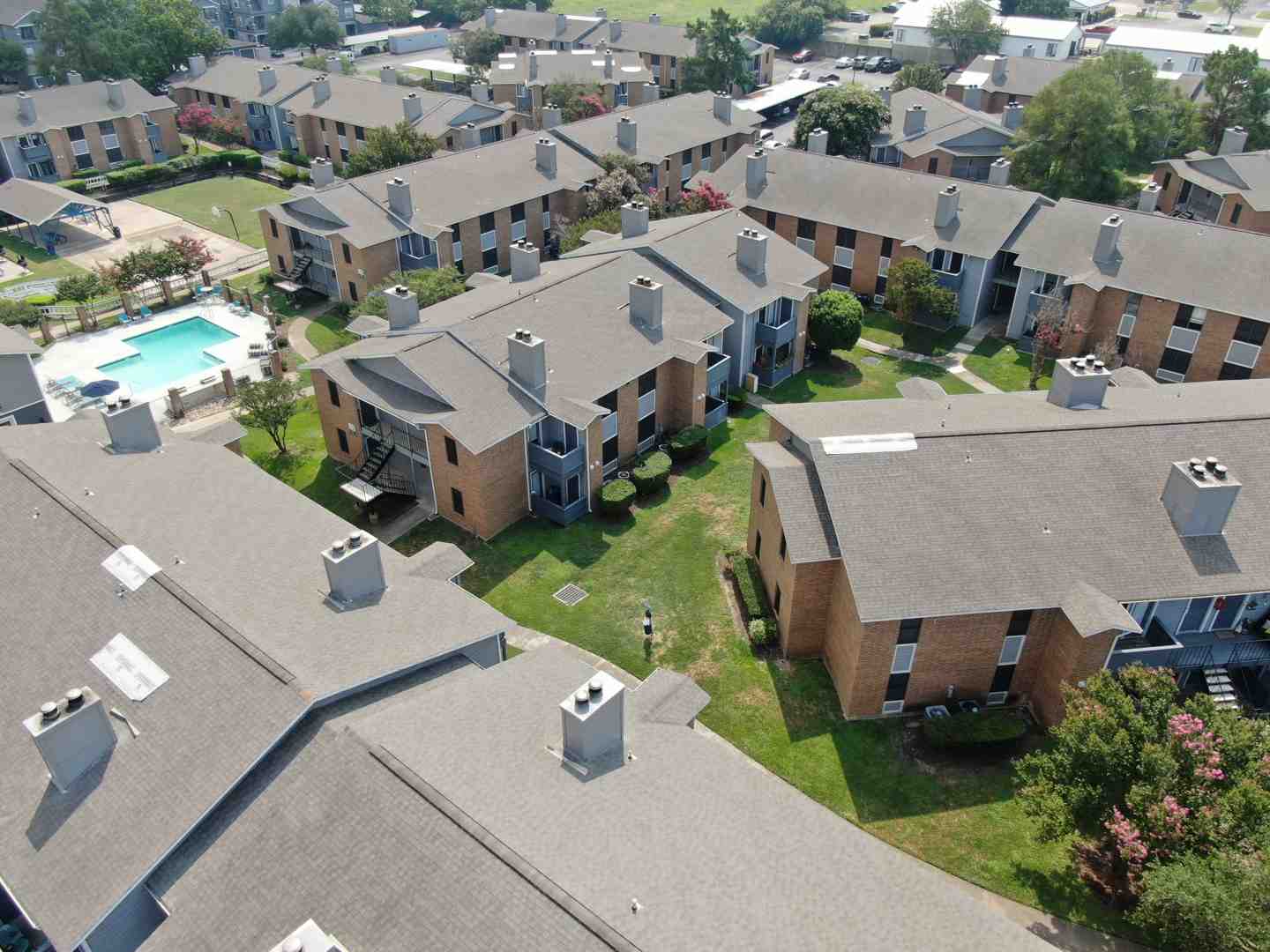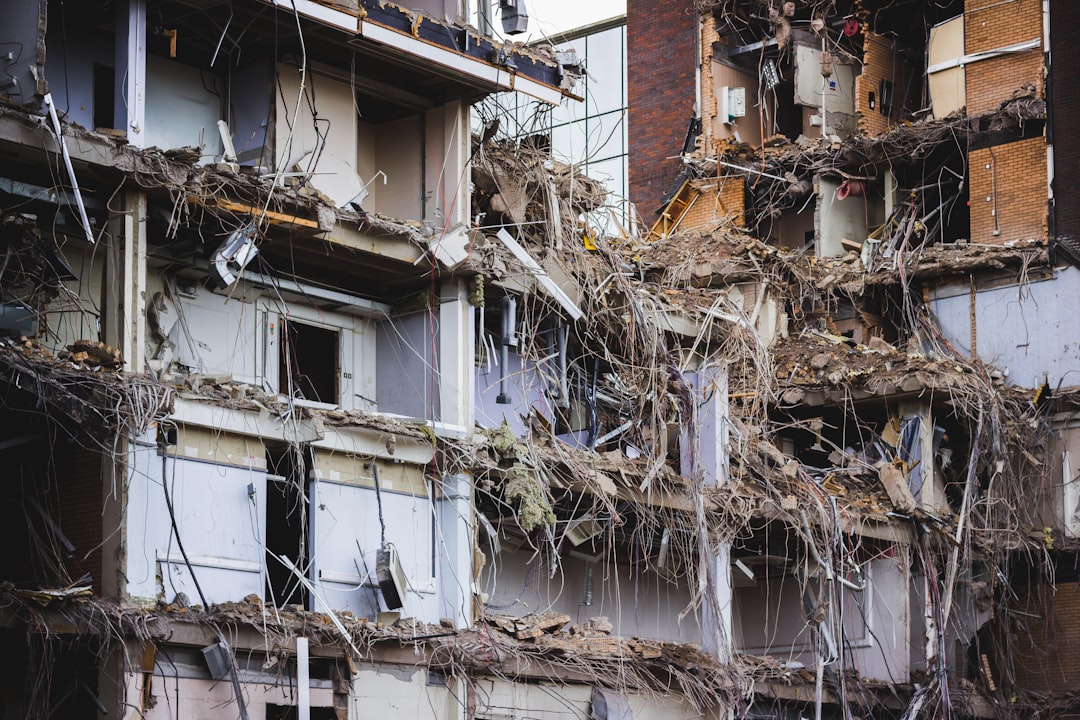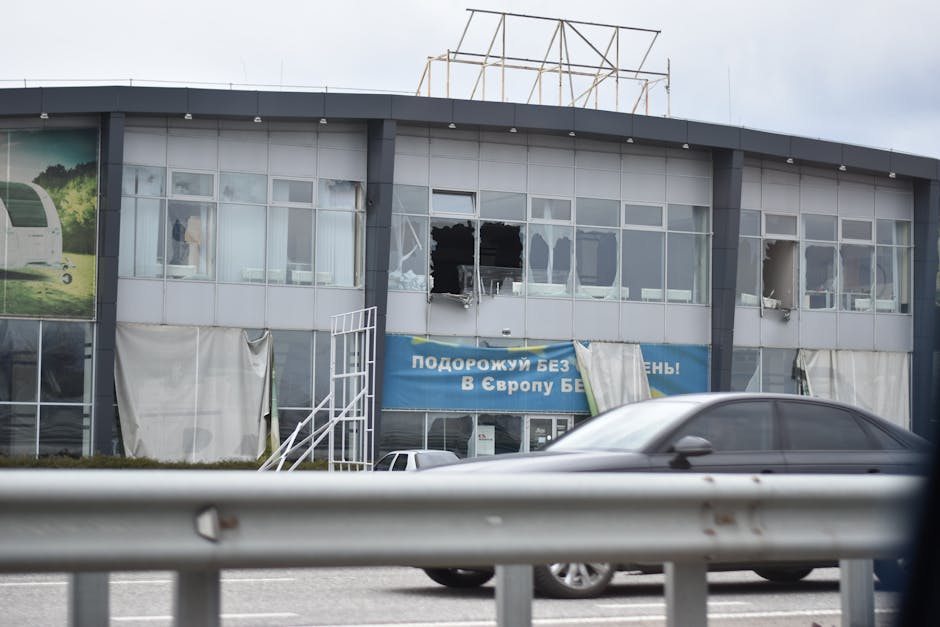When Fire Strikes: Why You Need Expert Legal Help
When disaster strikes and flames consume your property, hiring a fire property damage attorney can mean the difference between a fair settlement and financial devastation. These specialized attorneys fight insurance companies that routinely deny, delay, or underpay legitimate fire damage claims.
Quick Answer for Fire Property Damage Attorney Search:
- What they do: Negotiate with insurers, investigate fire causes, and maximize claim settlements
- When to hire: For claims over $50,000, denied/underpaid offers, or third-party liability cases
- Average fire payout: $77,340 (2016-2020), making it the most expensive homeowner loss
- Fees: Typically 20-40% contingency – you only pay if you win
- Time limit: 2 years in Texas to file lawsuit after claim denial
Fire damage consistently ranks as the most expensive type of property loss. While only 1 in 385 insured homes suffers fire damage annually, these claims account for nearly 25% of all insurance payouts. The aftermath extends far beyond visible flame damage – smoke infiltration, water damage from firefighting efforts, and hidden structural issues can multiply your losses exponentially.
Insurance companies often exploit policyholders’ emotional vulnerability after fires, using delay tactics and lowball offers while families struggle with displacement and trauma. Texas property owners face unique challenges with wildfire risks, especially in drought-prone areas around Austin, Houston, and Dallas.
I’m Scott Friedson, a multi-state licensed public adjuster and CEO of ICRS LLC, where I’ve settled over 500 large loss claims valued at more than $250 million. Throughout my career handling complex fire property damage attorney cases, I’ve overturned wrongfully denied claims and increased settlements from 30% to 3,800% or more.
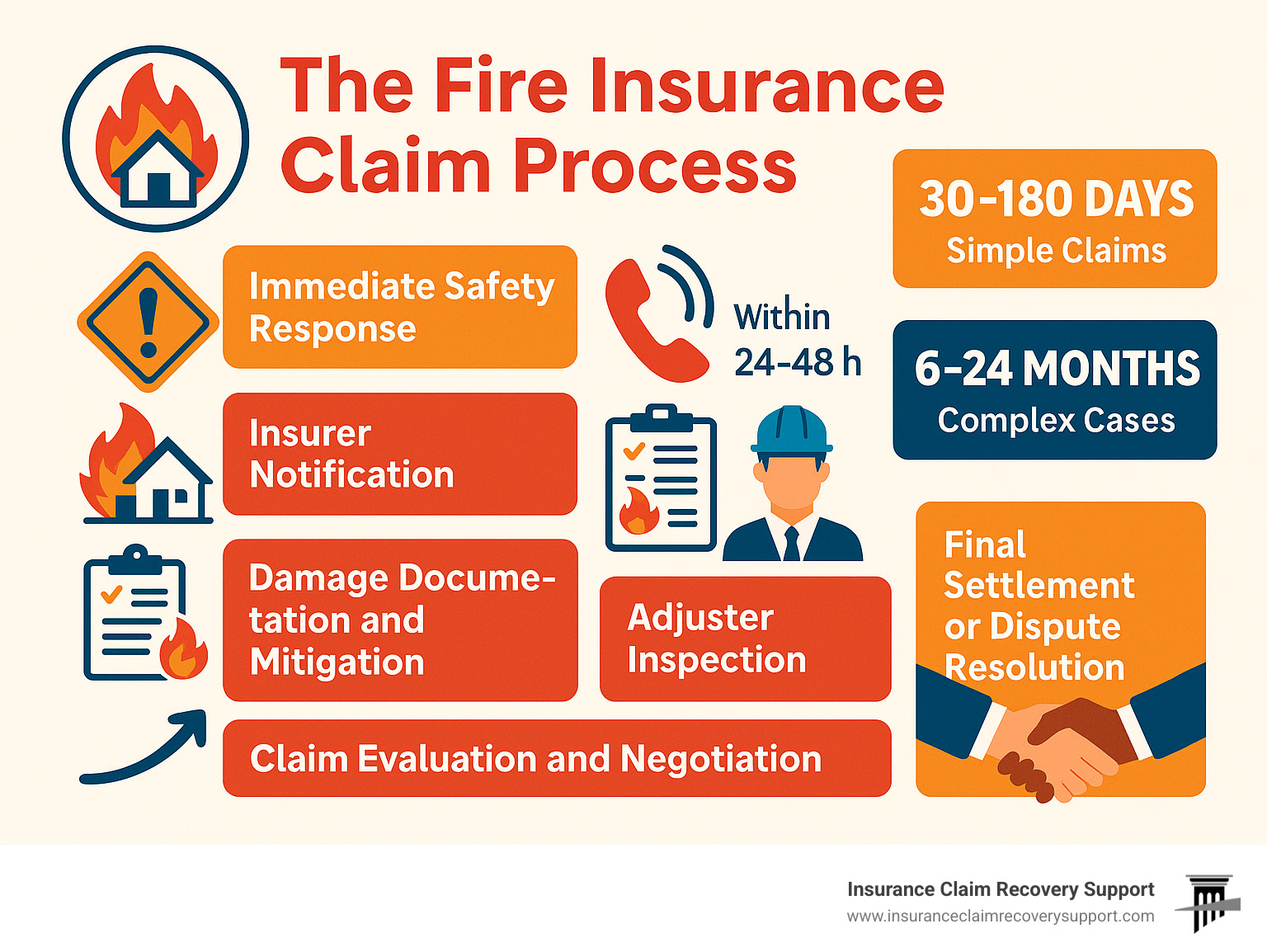
Fire property damage attorney glossary:
– Insurance claim lawyer Dallas
– Public adjuster services Texas
– Property damage lawyer Texas
Fire Damage 101: What Your Policy Really Covers
When flames tear through your home, understanding your insurance coverage becomes your lifeline to recovery. Most homeowners assume their policy covers fire damage—and they’re usually right—but the real question is how much and what exactly gets covered.
Your standard homeowners policy treats fire as a covered peril, but coverage breaks down into three essential buckets that determine your financial recovery.
Dwelling coverage protects the bones of your home—your foundation, walls, roof, and anything permanently attached. This coverage should reflect what it costs to rebuild your home today, not what you paid for it. With construction costs skyrocketing across Texas cities like Austin and Dallas, many policies fall dangerously short.
Personal property coverage handles everything inside your home that isn’t nailed down. Most policies automatically set this at 50-70% of your dwelling coverage, but that percentage might not match your actual belongings’ value.
Additional Living Expenses (ALE) becomes your saving grace when fire damage forces you out of your home. This coverage pays for hotel bills, restaurant meals, and other costs above your normal living expenses while you’re displaced.
Fire damage rarely stays contained to what the flames actually touch. When firefighters arrive, they’re pumping 100-400 gallons of water per minute into your home. That water causes extensive damage throughout areas the fire never reached.
Smoke damage presents another invisible enemy. Those tiny particles seep into every porous surface, from your clothes to your drywall. Even after the fire’s out, soot continues its destructive work, creating corrosive compounds that keep damaging your property for months.
Texas Insurance Code offers specific protections that many homeowners don’t know about. Insurance companies must respond promptly to claims and face penalties for unreasonable delays. But insurers have become experts at finding policy exclusions to deny or reduce claims.
The average fire claim payout of $77,340 reflects just how expensive these losses become. Our Fire Insurance Public Adjuster services help you steer these complex coverage issues.
Hidden Costs Most Owners Miss
Fire creates sneaky damage that doesn’t show up in dramatic “before and after” photos. These hidden costs can double your claim amount.
Soot corrosion tops the list of invisible destroyers. Those acidic particles actively eat away at metal surfaces, electrical wiring, and appliances. An appliance that looks fine immediately after the fire might be corroding from the inside out.
HVAC contamination spreads fire damage throughout your entire home. Your heating and cooling system becomes a delivery mechanism for smoke and soot particles, contaminating every room connected to the ductwork. Professional cleaning costs thousands, but replacement can run $10,000-$15,000.
Asbestos exposure creates a serious health and financial hazard in older homes. If your home was built before 1980, fire damage can disturb asbestos-containing materials. Our Asbestos Fire specialists understand the specialized remediation requirements that can add $15,000-$30,000 to your claim.
Code upgrades force you to rebuild to today’s standards, not the codes from when your home was originally built. These “betterment” costs catch homeowners off guard because they’re required by law.
Landscaping losses often get overlooked entirely. A single mature oak tree can be worth $10,000-$15,000 to replace, but many families never think to include landscaping in their claims.
When a fire property damage attorney evaluates these hidden costs, they often find that the true damage exceeds initial estimates by 50-100%.
When to Call a Fire Property Damage Attorney
Deciding whether to hire a fire property damage attorney can feel overwhelming when you’re already dealing with fire aftermath. But making the right choice here can be the difference between getting fairly compensated and leaving thousands of dollars on the table.
Not every fire claim needs an attorney. But certain red flags should have you picking up the phone immediately. Claim size matters – if you’re looking at damages over $50,000, the math usually works in your favor. The potential increase in your settlement typically covers the attorney’s fees several times over.
Denied or underpaid offers are perhaps the biggest warning sign. Insurance companies know that most people don’t understand their rights or the true value of their claims. A fire property damage attorney can investigate why your claim was denied and often gets insurers to completely reverse their position.
Things get more complicated when third-party liability enters the picture. Maybe a contractor’s faulty electrical work started the fire, or your neighbor’s careless brush burning spread to your property. This is where legal expertise becomes essential.
Arson allegations require immediate legal help. If your insurer even hints that the fire might have been intentional, don’t say another word without an attorney present. False arson claims can void your entire policy and potentially lead to criminal charges.
Watch out for bad-faith tactics from your insurance company. These might include endless delays, demanding the same documentation repeatedly, or making settlement offers that are obviously inadequate.
Don’t forget about Texas’s statute of limitations – you only have two years from the date of loss to file a lawsuit if your claim is wrongfully denied. Early intervention often resolves disputes without ever seeing the inside of a courtroom.
Property owners in Austin, Dallas, and Houston face unique challenges with increasing wildfire risks. Urban expansion into wildland areas, combined with Texas drought conditions, has created new coverage disputes that require specialized knowledge.
How a fire property damage attorney Fights Claim Denials
When insurance companies deny fire damage claims, they’re betting you won’t fight back. A skilled fire property damage attorney has multiple weapons in their arsenal to prove them wrong.
Independent investigations often uncover what insurance company adjusters miss – or choose to ignore. Your attorney will bring in fire investigators, structural engineers, and other experts who work for you, not the insurance company.
The power of expert witnesses cannot be overstated. Fire damage cases often hinge on technical details that require specialized knowledge to explain. Your attorney knows which experts to engage and how to present their findings.
Many people don’t realize their insurance policy includes an appraisal clause that allows disputes over damage amounts to be resolved by neutral appraisers rather than going to court. Experienced attorneys know how to invoke these clauses.
Sometimes the mere threat of litigation is enough to motivate insurers to reconsider their position. When an attorney gets involved, suddenly that denied claim doesn’t look like such a sure bet anymore.
Our Fire Damage Claim Help services combine legal expertise with public adjusting experience. This unique approach maximizes your recovery while minimizing the stress and delays that often come with traditional litigation.
Fee Structures of a fire property damage attorney
Understanding how fire property damage attorneys charge for their services helps you make informed decisions about representation. Most work on contingency fee arrangements, meaning you don’t pay unless you win.
Contingency fees typically range from 20-40% of your recovery amount. The exact percentage depends on several factors: how complex your case is, the size of your claim, and whether litigation becomes necessary.
Here’s how the cost-benefit analysis works in practice. Let’s say your insurance company offers you $100,000, but you think your damages are worth more. An attorney reviews your case and believes they can get you $200,000. Even if they charge a 30% contingency fee ($60,000), you still net $140,000 – that’s $40,000 more than handling it yourself.
At Insurance Claim Recovery Support, we often work as public adjusters rather than attorneys, which can provide more cost-effective representation for many fire damage claims.
Step-by-Step Claim & Documentation Blueprint
When fire strikes, your first 48 hours decide whether you get a fair check or months of headaches.
- Stay safe. Enter only after the fire department clears the scene.
- Notify your insurer within 24–48 hours. Fast notice removes the “late-reporting” excuse.
- Mitigate further damage. Board-ups, roof tarps and debris removal are reimbursable—save every receipt. Our Mitigation Fire service lines up qualified crews.
- Document before cleanup. Shoot wide photos, close-ups and a narrated video walk-through.
- Create a Schedule of Loss. List every damaged item, its age and today’s replacement cost.
- Gather proof. Keep receipts and at least two estimates for major repairs.
- Secure official reports and witness statements. Fire-department paperwork carries major weight with insurers.
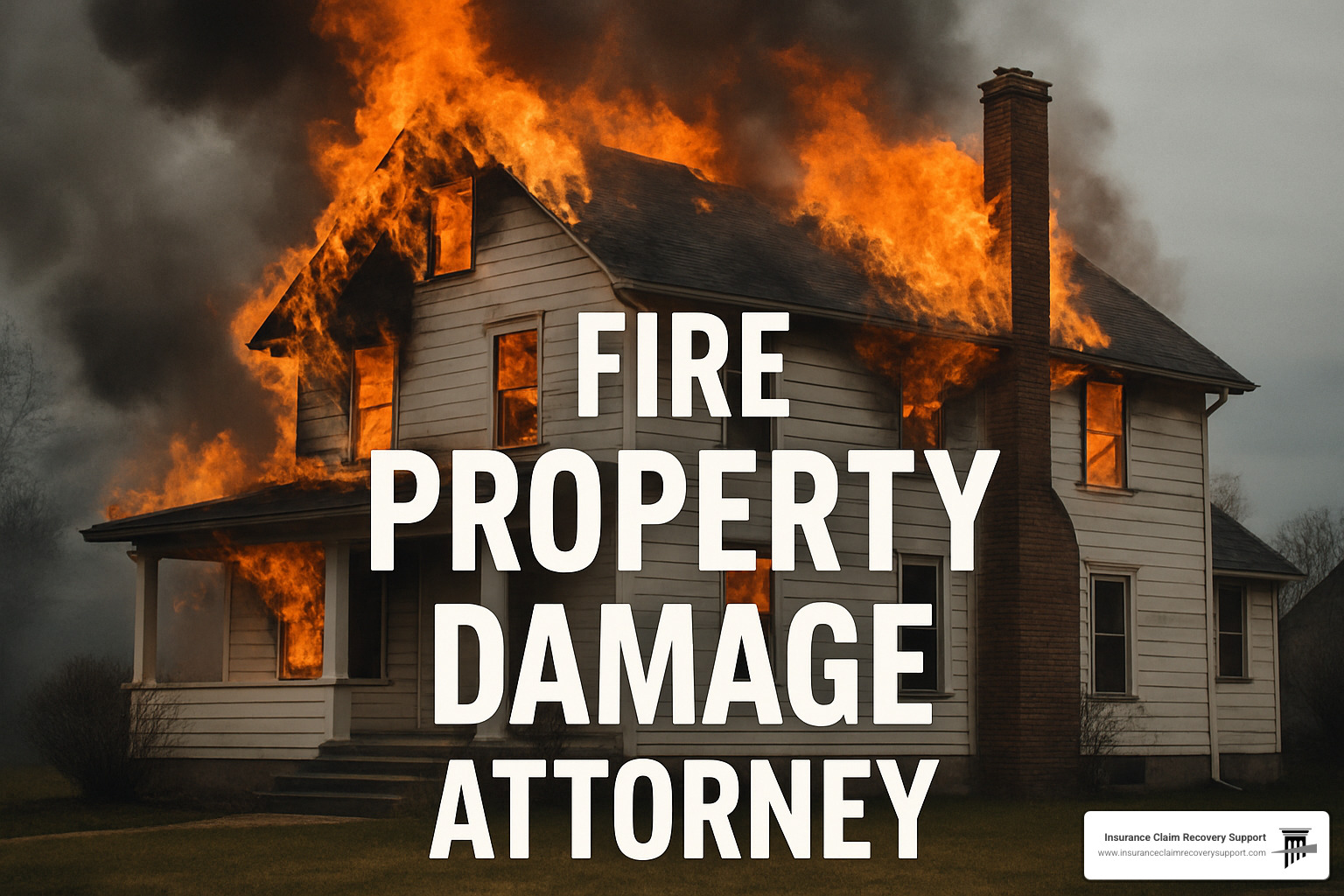
Filing Your Fire Damage Insurance Claim in Texas
Texas law gives policyholders leverage—if they follow the rules.
- Insurers must acknowledge your claim within 15 days and start investigating.
- After you supply requested info, they usually have 15 business days to pay or deny.
- Large claims often require a sworn Proof of Loss—check every line before signing.
Miss a deadline and you lose leverage; hit each one and carriers risk penalty interest. Our Public Insurance Adjuster for Fire Damage team keeps you on schedule.
Evidence That Moves the Needle
First-responder reports, independent experts, drone footage and thermal imaging expose hidden destruction insurers prefer to ignore.
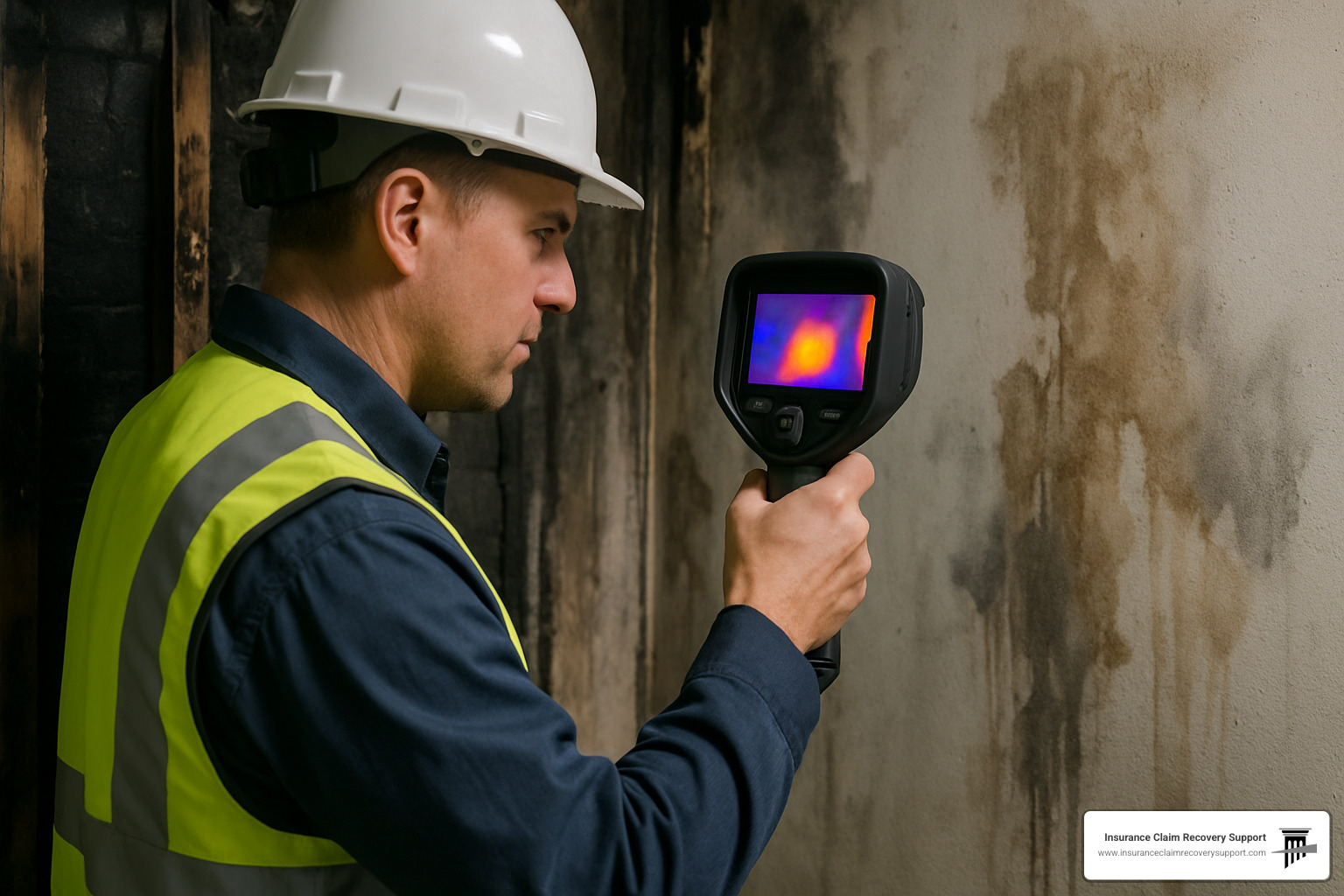
| Approach | Pros | Cons | Best For |
|---|---|---|---|
| DIY | No professional fees | Time-consuming; lower payouts | Claims < $25k |
| Public Adjuster | Claim expertise; 10-20% fee | Limited legal power | Most residential claims |
| Fire Attorney | Legal muscle; bad-faith remedies | 20-40% fee; longer | Denials & complex cases |
Beating Common Disputes: From Lowball Offers to Liability Wars
Insurers have a predictable playbook to shrink fire payouts. Know the counters and keep more of what you’re owed.
- Valuation gaps – carriers depreciate furniture and appliances; answer with current replacement quotes.
- Vacancy clauses – a house is rarely “vacant” just because no one slept there for a few weeks.
- Misrepresentation claims – alleged application errors need legal review, not panic.
- Concurrent causation – Texas courts often favor coverage when fire combines with an uncovered peril.
- Partial vs. total loss – if repairs approach policy limits, push for a total-loss payout.
- Subrogation delays – you shouldn’t wait while your insurer sues the party that started the fire.
Utility-sparked wildfires around Austin, Dallas, and the Panhandle have made inverse condemnation suits common. Our Panhandle Texas Fire Insurance Claim work, backed by National Fire Protection Association research, coordinates insurance recovery with any utility litigation.
Third-Party Claims & Litigation Options
Defective products, negligent contractors and power-line sparks can open new recovery sources. A seasoned fire property damage attorney can pursue these suits while we steward the insurance claim.
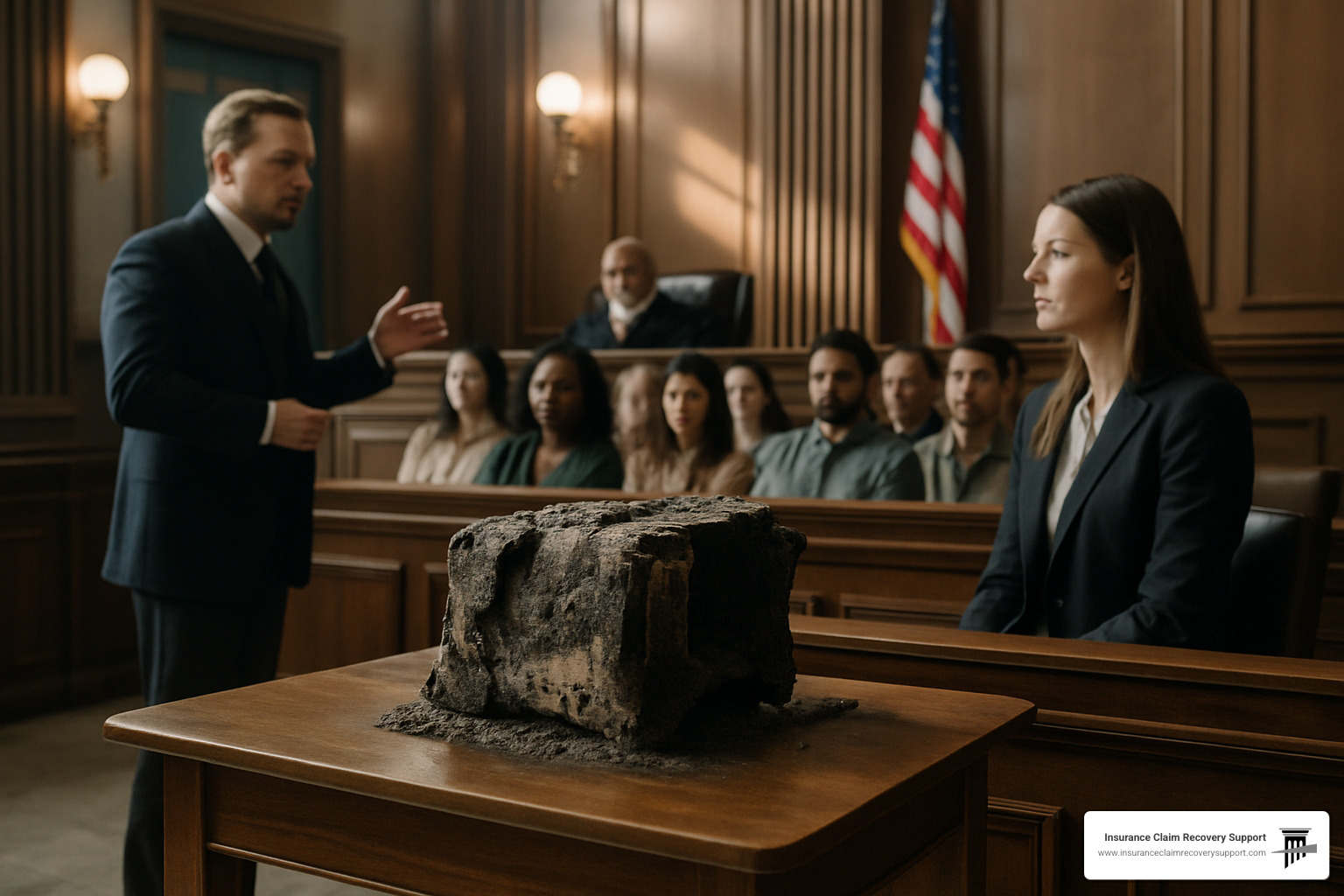
Maximizing Recovery & Preventing Future Fire Losses
Your settlement is the start of rebuilding smarter, not the end of the story.
- Use ordinance and law coverage to rebuild to modern codes.
- Upgrade to Class-A roofing, fiber-cement siding and defensible landscaping—often with premium discounts.
- Install smart smoke detectors and, where feasible, residential sprinklers (homes with sprinklers suffer 80 % less damage).
- Keep a yearly checklist: electrical inspections, chimney cleaning, HVAC service and policy reviews.
Our Building Damage team helps you pick improvements that raise value and cut risk.
Rebuild vs. Cash-Out Decisions
- RCV policies reimburse full replacement costs; ACV subtracts depreciation.
- Many carriers pay ACV first, then release depreciation when repairs finish—usually within 2–4 years.
- Vet contractors for licenses, insurance and local references.
- Construction in San Antonio and Lubbock often runs 15–25 % below Austin or Houston, so compare bids before deciding to rebuild or cash out.
Frequently Asked Questions about Fire Property Damage Attorneys
How soon after a fire should I contact a fire property damage attorney?
The timing depends on your specific situation, but there are clear warning signs that demand immediate legal attention.
Call immediately if your insurer suggests the fire might be arson, questions your credibility, or hints at coverage denial. These red flags indicate potential bad faith tactics that require expert legal response from day one.
You should also contact an attorney right away if the fire involves third-party liability – like faulty contractor work or neighbor negligence. These cases require coordinating insurance claims with potential lawsuits.
For high-value claims over $50,000, early attorney involvement often pays for itself by identifying coverage opportunities and documentation strategies that maximize settlements.
However, straightforward claims under $25,000 with cooperative insurers and clear fire causes might not need immediate legal representation. You can start the process yourself, but don’t hesitate to call if problems develop.
What compensation can I request beyond structural repairs?
Many fire victims don’t realize how much compensation they’re entitled to beyond basic structural repairs.
Additional Living Expenses (ALE) can be substantial – covering hotel bills, restaurant meals, storage costs, and even pet boarding while your home is uninhabitable. Don’t settle for minimal ALE payments when you’re entitled to maintain your normal standard of living.
Personal property replacement should reflect current replacement costs, not what you originally paid years ago. That old furniture and clothing deserves fair compensation at today’s prices.
If you run a home-based business, you may be entitled to business interruption coverage for lost income during repairs.
Code upgrade costs often surprise property owners – when rebuilding, you must meet current building codes, not the standards from when your home was originally built. These mandatory upgrades can add tens of thousands to legitimate claims.
Don’t forget landscaping and outdoor structures like sheds, fences, and gardens. These losses add up quickly and are often covered under your policy’s other structures provision.
What should I avoid saying to the insurance adjuster?
Insurance adjusters are trained professionals whose job is protecting their company’s bottom line, not maximizing your settlement.
Never give recorded statements without legal counsel present. Adjusters use these recordings to find inconsistencies or admissions that can undermine your claim months later.
Avoid speculating about fire causes or admitting any fault whatsoever. Stick to basic facts about what you observed – “I saw flames in the kitchen” rather than “I think I left the stove on.”
Don’t discuss pre-existing conditions or previous maintenance issues unless directly asked with specific documentation. Casual comments about old wiring or deferred maintenance can provide grounds for coverage denial.
Never accept the first settlement offer without independent evaluation. Saying “that sounds fair” can be interpreted as acceptance, even if you intended to think it over.
Avoid signing any documents without understanding their implications. Forms labeled “proof of loss” or “statement of facts” can limit your future claim options if not prepared carefully.
Adjusters work for the insurance company, not for you. Being polite and cooperative is fine, but protect your interests by keeping conversations factual.
Conclusion
When flames tear through your property, the devastation doesn’t end when the fire trucks leave. Insurance delays and underpayments can burn twice – leaving you fighting for fair compensation while trying to rebuild your life. The statistics tell a stark story: fire damage claims average $77,340 and account for 25% of all insurance settlements, despite affecting only 1 in 385 homes annually. With stakes this high, going it alone against insurance companies simply isn’t worth the risk.
The path forward depends on your unique situation. Simple claims under $25,000 might be manageable on your own, but complex losses, denied settlements, third-party liability issues, and high-value damages almost always benefit from expert representation. Whether you need a fire property damage attorney, a public adjuster, or a combination of professional services, the key is getting help before problems spiral out of control.
At Insurance Claim Recovery Support, we’ve walked alongside hundreds of Texas property owners through their darkest hours after fires. From the urban sprawl of Austin and Dallas to the wide-open spaces around Lubbock and San Angelo, we’ve helped families and businesses recover millions in fire damage settlements across the Lone Star State. Our unique combination of public adjusting expertise and deep knowledge of insurance law often achieves maximum recovery without the time and expense of lengthy litigation.
Don’t let insurance companies exploit your vulnerability when you’re already down. We’ve seen too many good people accept lowball offers or give up entirely because the process felt overwhelming. The difference between professional representation and handling things yourself can literally mean hundreds of thousands of dollars in your pocket – not to mention months of reduced stress during an already difficult chapter of your life.
Your home and business represent more than just property – they’re where memories are made, dreams are built, and futures are secured. You deserve every dollar your policy promises, and we’re here to make sure you get it.
Ready for a free, no-obligation claim review? Our experienced team can evaluate your situation, explain your options clearly, and help you make informed decisions about your fire damage recovery. Don’t wait until it’s too late – contact us today to protect your rights and secure every dollar you’re owed.
For more information about maximizing your property damage recovery, visit our comprehensive guide on property damage recovery.

